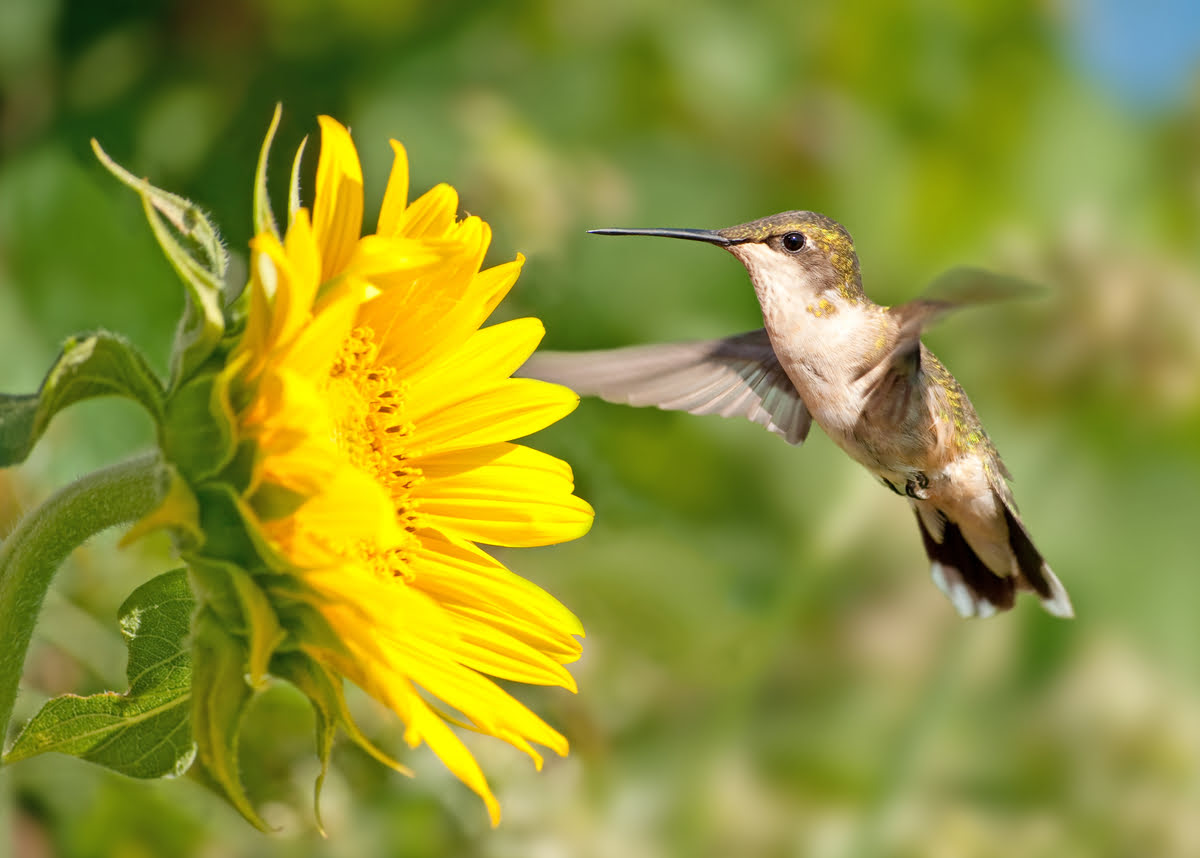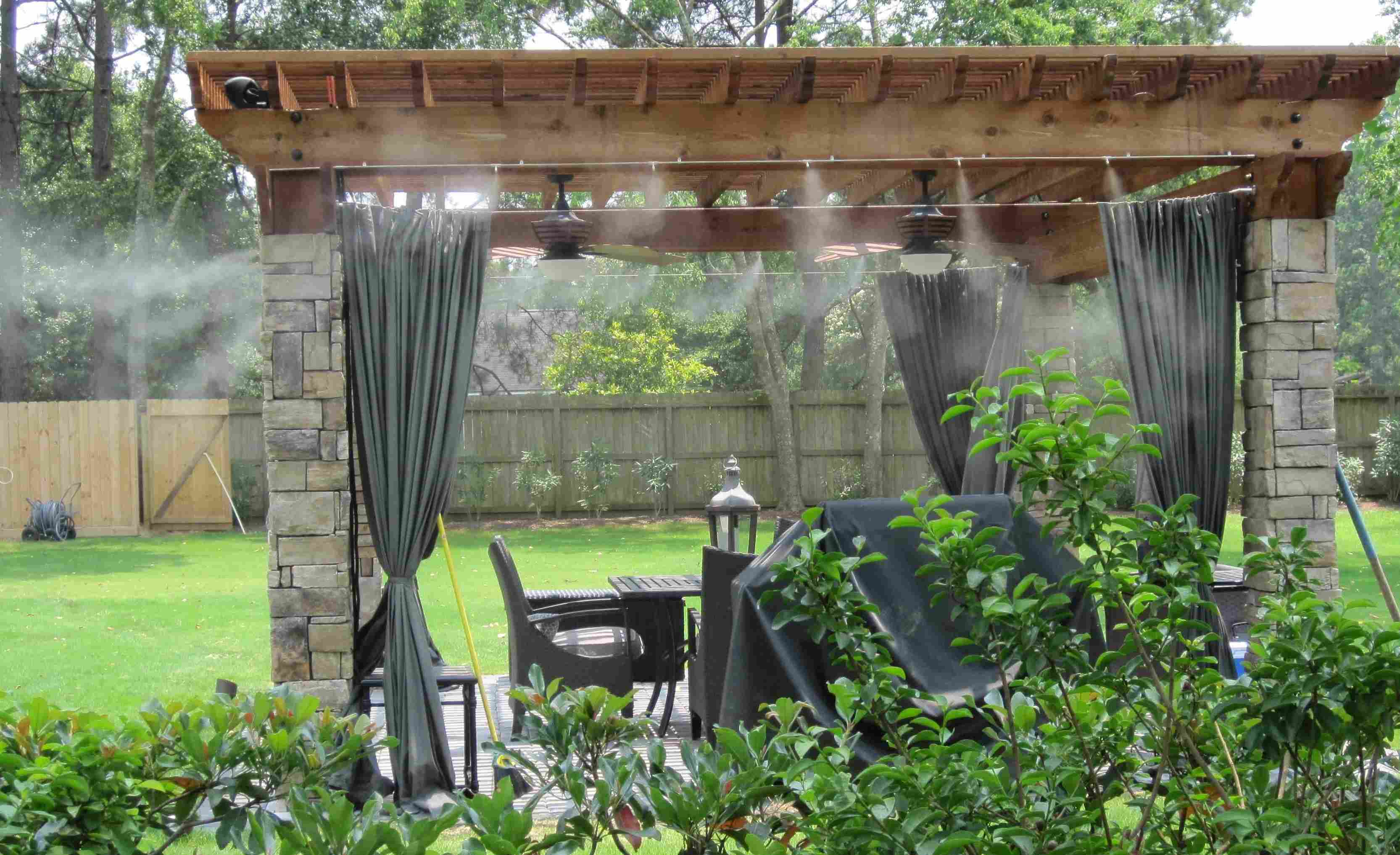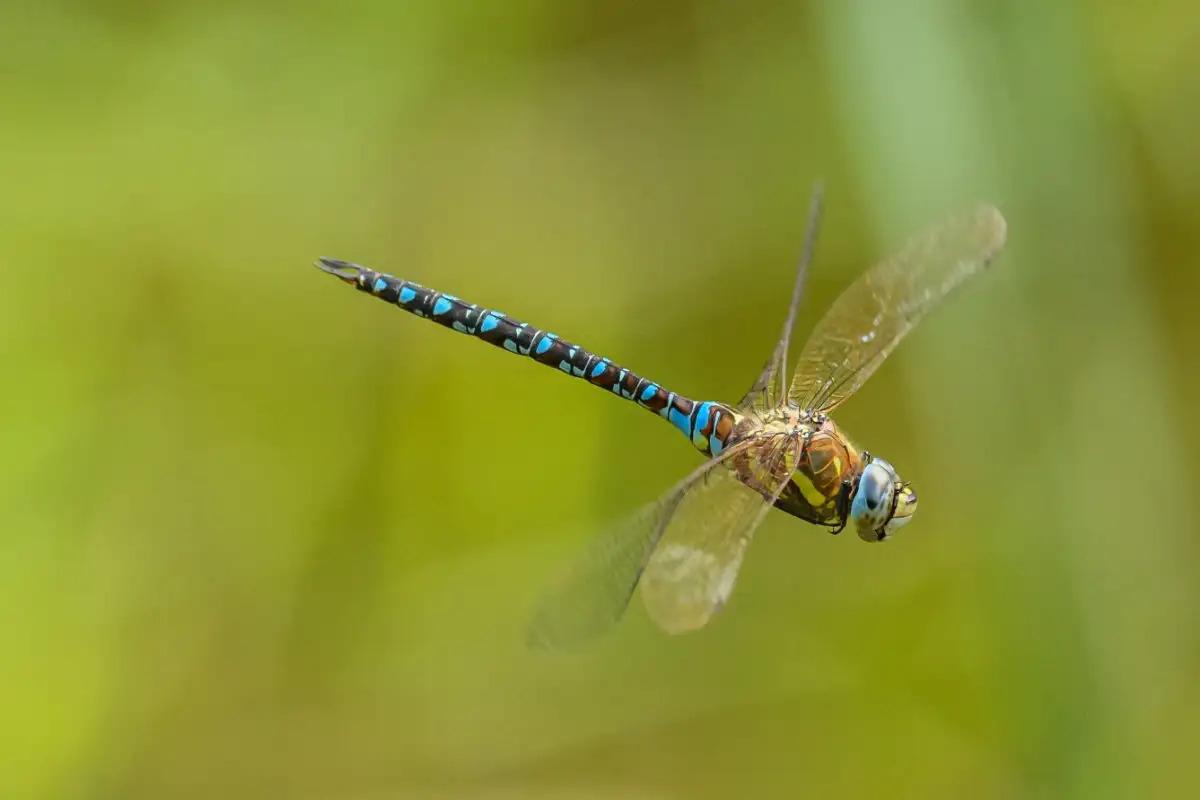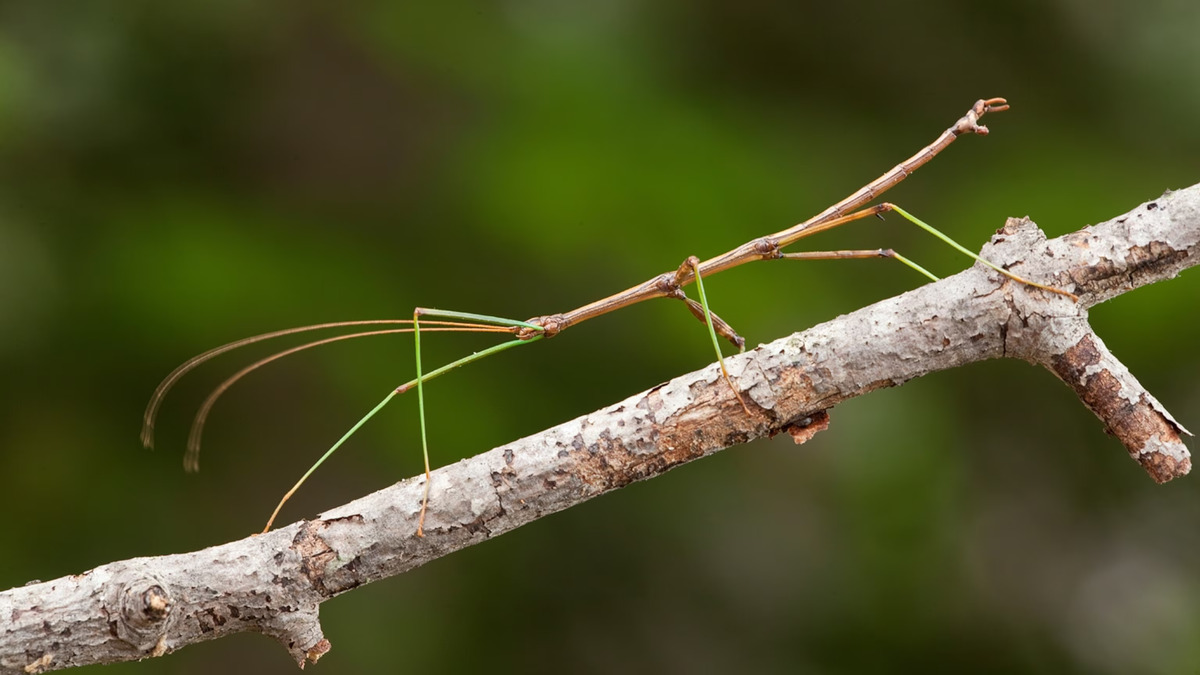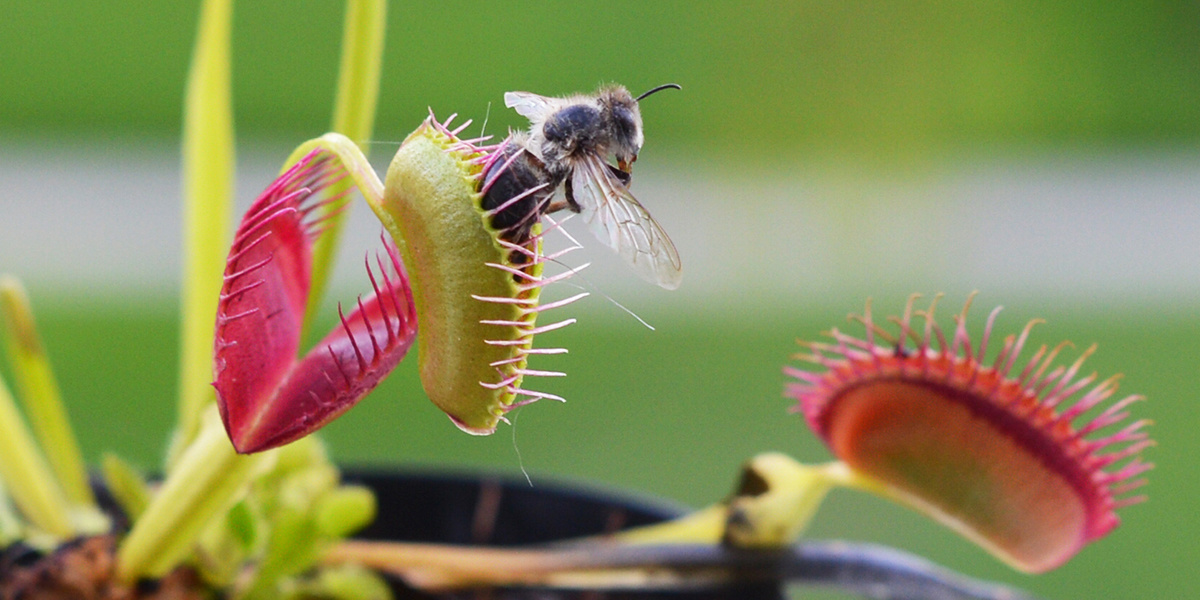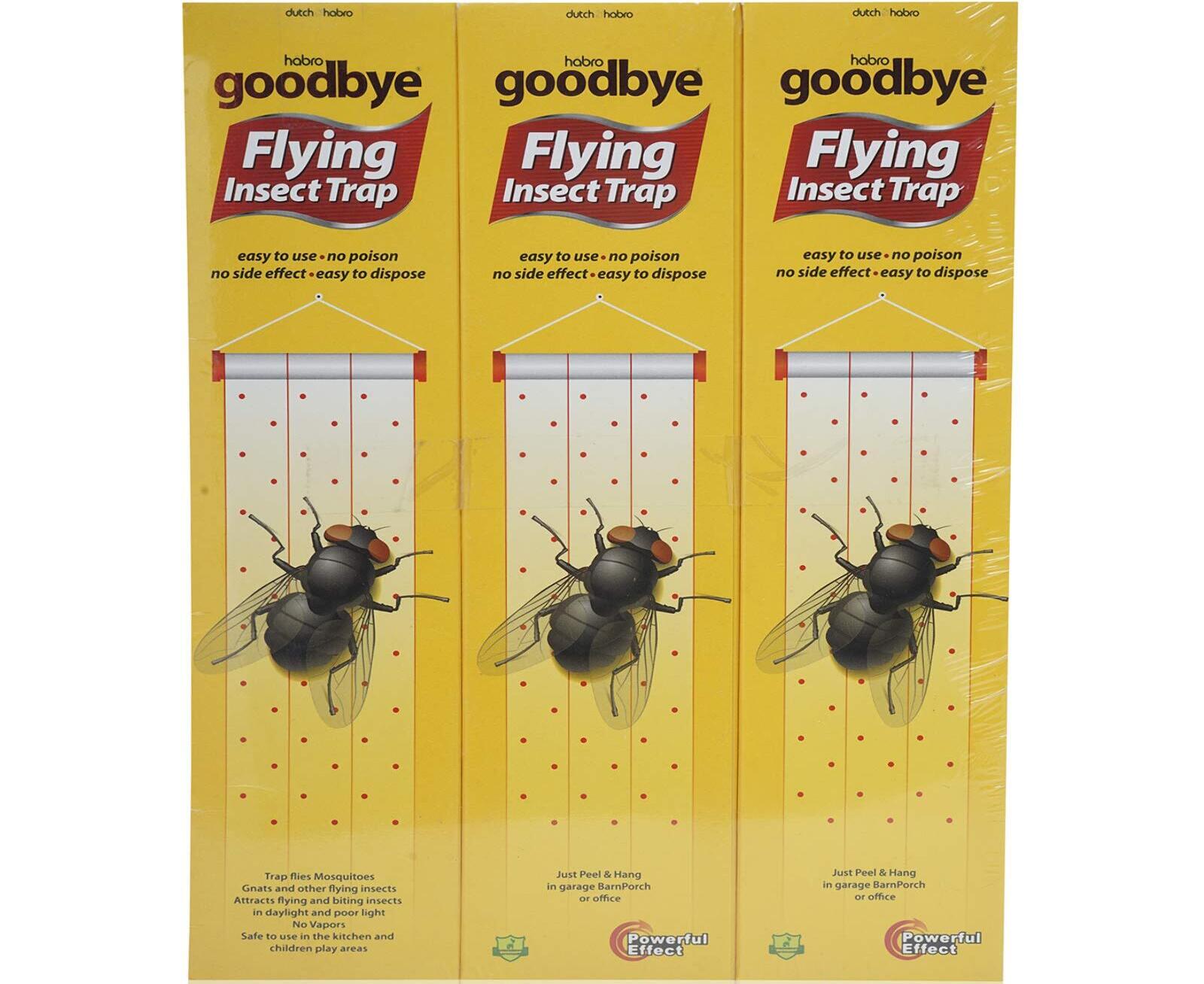Home>Gardening News and Trends>Latest News>What Keeps Flying Insects Away
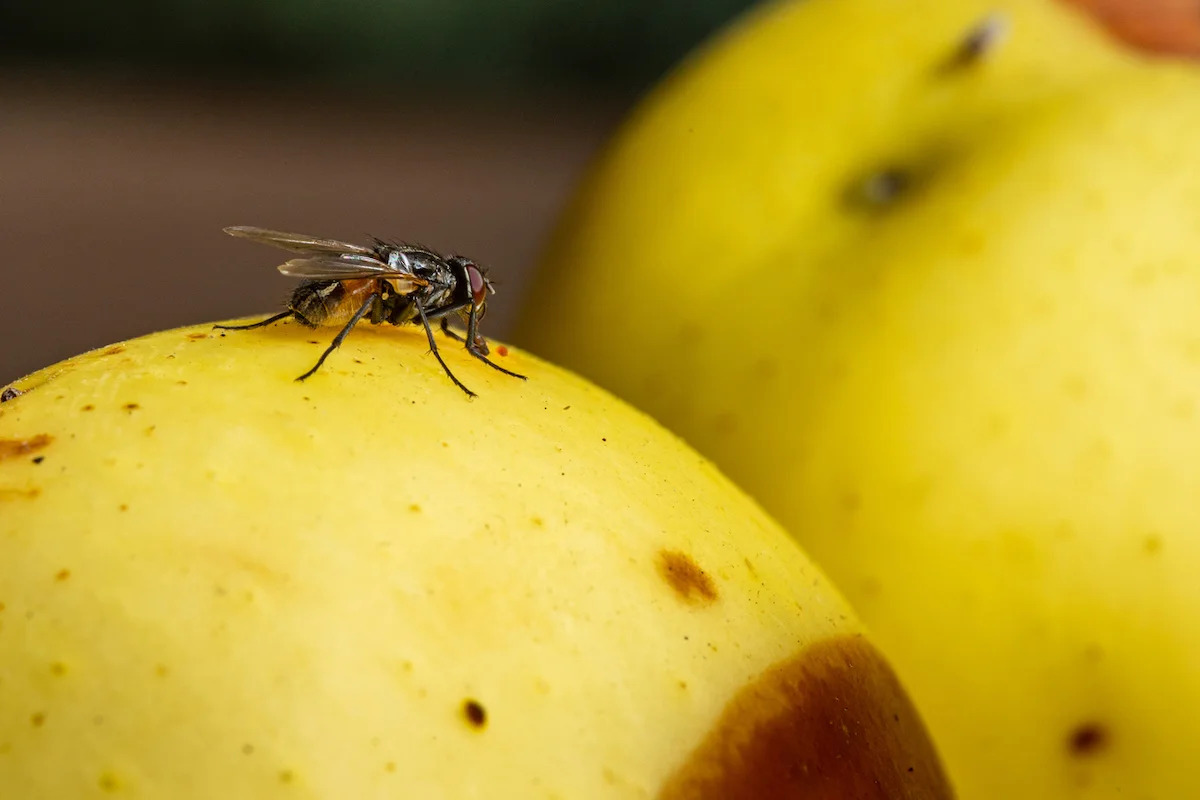

Latest News
What Keeps Flying Insects Away
Modified: January 29, 2024
Discover the latest news on what keeps flying insects away. Learn effective techniques and natural remedies to keep your space insect-free.
(Many of the links in this article redirect to a specific reviewed product. Your purchase of these products through affiliate links helps to generate commission for Chicagolandgardening.com, at no extra cost. Learn more)
Table of Contents
Introduction
Flying insects can be a nuisance, whether you’re enjoying a picnic in the park or trying to relax on your patio. Not only do they ruin your outdoor experience, but some flying insects like mosquitoes and flies can also pose health risks by carrying diseases. So, what can you do to keep these pesky creatures at bay?
In this article, we will explore natural and artificial repellents for flying insects that can help keep them away. Whether you prefer a more eco-friendly approach or opt for commercially available products, there are plenty of options to choose from.
By using natural repellents, you can avoid exposing yourself and the environment to harsh chemicals found in some artificial products. These natural options are often derived from plants and herbs that emit strong scents that insects find unpleasant.
On the other hand, artificial repellents are designed to provide long-lasting protection against a wide range of flying insects. These products usually contain synthetic chemicals that are effective at repelling insects and are widely available in the market.
Before we dive into the various repellent options, it’s important to note that while repellents can effectively reduce insect bites and annoyance, they are not foolproof. It’s still important to take other measures such as wearing protective clothing, using screens on windows and doors, and eliminating standing water to minimize insect activity in your surroundings.
Now, let’s explore some of the natural and artificial repellents that can help keep those flying insects away, so you can enjoy your time outdoors without any unwanted buzz or bites.
Natural Repellents for Flying Insects
When it comes to keeping flying insects away, nature has provided us with several effective options. These natural remedies are not only safe for you and the environment but often come with additional benefits such as pleasant scents or culinary uses. Here are some of the top natural repellents for flying insects:
- Citronella: Derived from a tropical grass, citronella oil is a popular natural repellent for mosquitoes. Its strong, citrusy scent masks the attractant odors that mosquitoes are drawn to.
- Lemongrass: Lemongrass contains citronella oil and has a similar effect on mosquitoes. You can apply lemongrass oil directly to your skin or use it in candles or diffusers to repel these pests.
- Peppermint: Known for its refreshing aroma, peppermint oil is effective in repelling mosquitoes, flies, and other flying insects. Plus, it has a cooling sensation when applied to the skin.
- Eucalyptus: The strong, pleasant scent of eucalyptus oil acts as a deterrent to flying insects, especially mosquitoes. It can be used in sprays or diffusers to create a protective barrier.
- Lavender: Aside from its relaxing properties, lavender oil is also a natural insect repellent. Its sweet floral scent helps keep mosquitoes and moths at bay.
- Basil: Not only is basil a versatile herb in the kitchen, but it also possesses mosquito-repelling properties. Planting basil around your outdoor space can help deter flies and mosquitoes.
- Marigold: The bright blooms of marigold flowers not only add color to your garden but also repel insects. The fragrance emitted by marigolds is known to deter mosquitoes and aphids.
- Catnip: While it may attract cats, catnip repels mosquitoes and other flying insects. It contains a compound called nepetalactone, which has been found to be even more effective than DEET in repelling mosquitoes.
- Rosemary: Rosemary is not only a delicious herb for cooking, but it also possesses insect-repelling properties. Burning rosemary branches or using rosemary oil can help keep mosquitoes and flies away.
- Garlic: Adding garlic to your outdoor cooking can help repel mosquitoes. Eating garlic regularly may also make you less attractive to these pests, thanks to the sulfur compounds released through your skin.
- Neem Oil: Derived from the seeds of the neem tree, neem oil is a natural insecticide and repellent. It can be used to create sprays or applied topically to repel a wide range of insects including mosquitoes and flies.
These natural repellents provide effective alternatives to synthetic and chemical-based products. Remember to apply them regularly and reapply after swimming or sweating. Pairing them with other preventive measures such as wearing protective clothing and avoiding peak mosquito hours can further enhance their effectiveness.
Citronella
Citronella is a popular natural repellent known for its ability to ward off mosquitoes. Derived from the citronella grass (Cymbopogon), this essential oil has a distinct citrusy scent that acts as a deterrent to flying insects.
When applied topically or used in candles and diffusers, citronella oil masks the scents that attract mosquitoes, reducing their desire to feast on your blood. Its strong odor can help create a protective barrier around your outdoor space, keeping these pesky insects at bay.
Citronella oil is available in various forms, including sprays, lotions, and candles. Applying a citronella-based repellent directly to your skin can provide immediate protection against mosquito bites. Make sure to follow the instructions on the product label for proper application and reapplication.
Citronella candles are another popular option for repelling mosquitoes. The heat from the candle releases the citronella scent into the air, effectively creating a larger area of protection. These candles are ideal for outdoor gatherings, picnics, or camping trips.
It’s important to note that while citronella is generally safe for use in humans, it may cause skin irritation or allergic reactions in some individuals. If you have sensitive skin, it’s recommended to conduct a patch test before using any citronella-based product on a larger area of your body.
When using citronella candles, ensure proper ventilation as the smoke can be irritating to some individuals, especially those with respiratory conditions. Place the candles in strategic locations, such as near seating areas or around the perimeter of your outdoor space, to maximize their effectiveness.
One thing to keep in mind is that citronella’s effectiveness may vary based on factors such as wind, humidity, and mosquito species. While it is generally effective in repelling mosquitoes, it may not provide full protection against other flying insects like flies or gnats. Consider combining citronella with other natural repellents or preventive measures for comprehensive insect control.
In addition to its insect-repellent properties, citronella has also been used in aromatherapy for its calming and uplifting effects. Its fresh, citrusy scent can create a pleasant ambiance while repelling insects, adding a multi-purpose aspect to its use.
Overall, citronella is a natural and versatile repellent option for keeping mosquitoes away. Whether you choose to apply it topically or use citronella candles, incorporating this essential oil into your outdoor routine can help create a more enjoyable and mosquito-free environment.
Lemongrass
Lemongrass, also known as Cymbopogon citratus, is a popular natural repellent for flying insects, particularly mosquitoes. With its fresh and lemony scent, lemongrass is not only pleasant to humans but also acts as a deterrent to these pesky insects.
Lemongrass oil, derived from the leaves and stalks of the lemongrass plant, contains citral and geraniol, which are compounds known for their insect-repellent properties. Applying lemongrass oil directly to your skin can provide immediate protection against mosquitoes and other flying insects.
In addition to direct application, lemongrass is often used in the form of candles, diffusers, or sprays. Lighting lemongrass candles or using diffusers that release its scent can create a shield around your outdoor space, making it less inviting for mosquitoes to approach.
If you’re planning to spend time outdoors, consider planting lemongrass in your garden or pots. Not only does it add a touch of greenery to your surroundings, but it also acts as a natural deterrent for mosquitoes and flies. You can crush the leaves to release the scent or even rub them directly onto your skin for added protection.
It’s important to note that while lemongrass is generally safe for use, it may cause skin irritation in some individuals. If you have sensitive skin, it’s advisable to perform a patch test before applying it to a larger area of your body.
Lemongrass is not only effective in repelling insects, but it also has other benefits. This versatile herb is commonly used in culinary dishes and herbal teas, adding a refreshing and citrusy flavor. So, you can enjoy the dual benefits of repelling mosquitoes and enhancing your culinary adventures.
As with any natural repellent, the effectiveness of lemongrass may vary depending on factors such as wind, humidity, and mosquito species. Consider using lemongrass in conjunction with other natural repellents or preventive measures to maximize its impact and create a more comprehensive insect control strategy.
Whether you choose to apply lemongrass oil topically, use lemongrass products, or plant it around your outdoor space, incorporating this natural repellent can help keep mosquitoes at bay and make your outdoor experience more enjoyable.
Peppermint
Peppermint, with its refreshing and invigorating aroma, is not only a popular herb for culinary and therapeutic uses but also serves as a natural repellent for flying insects. Its strong scent acts as a deterrent, making it an effective option for keeping mosquitoes, flies, and other insects at bay.
Peppermint oil, derived from the leaves of the peppermint plant (Mentha piperita), contains high levels of menthol, which gives it its distinctive cooling sensation and potent scent. This makes it an excellent choice for repelling bugs.
One way to use peppermint for insect control is to make a DIY peppermint spray. Simply mix a few drops of peppermint essential oil with water in a spray bottle and spray it around your windows, doors, and outdoor seating areas. This creates a barrier that insects find unpleasant, deterring them from entering your living space.
Additionally, you can apply peppermint oil directly to your skin. Dilute a few drops of peppermint oil with a carrier oil such as coconut oil and apply it to exposed areas of your body. The strong scent of peppermint will help repel mosquitoes and other flying insects, reducing the chances of bites.
Peppermint plants themselves can also serve as a natural deterrent. Planting peppermint in pots around your patio or garden can help create a protective barrier against insects. The leaves of the plant can be crushed or rubbed onto the skin to release the scent and enhance its repellent properties.
Aside from its insect-repelling abilities, peppermint offers a range of additional benefits. Its refreshing scent can help uplift your mood and promote mental clarity. Additionally, peppermint has cooling properties that can provide relief from itching and irritation caused by insect bites.
It’s important to exercise caution when using peppermint oil, as it can be strong and may cause skin irritation in some individuals. Perform a patch test before applying it to a larger area of your body and, if any adverse reactions occur, discontinue use.
Whether you choose to use peppermint oil, make a DIY spray, or plant peppermint in your garden, incorporating this natural repellent can help keep flying insects away and create a more enjoyable outdoor experience.
Eucalyptus
Eucalyptus, with its distinctive scent and medicinal properties, is not only a favorite among koalas but also an effective natural repellent for flying insects, especially mosquitoes.
Eucalyptus oil, derived from the leaves of the eucalyptus tree (Eucalyptus globulus), contains compounds such as cineole and citronellal that act as insect deterrents. These compounds emit a strong aroma that repels mosquitoes, making it an excellent choice for keeping these pests at bay.
One of the easiest ways to use eucalyptus as a natural repellent is by creating a spray. Mix a few drops of eucalyptus oil with water in a spray bottle. You can then apply the spray onto your exposed skin or clothing before heading outdoors. The scent of eucalyptus acts as a barrier, discouraging mosquitoes from approaching and reducing the risk of mosquito bites.
If you prefer a more passive approach, you can also use eucalyptus in the form of candles or diffusers. Lighting eucalyptus candles or using diffusers that release the scent of eucalyptus oil can create a protective area around your outdoor space, making it less appealing to mosquitoes.
It’s important to note that while eucalyptus can be effective against mosquitoes, it may have varying levels of effectiveness against other flying insects such as flies or gnats. Consider using eucalyptus in conjunction with other natural repellents or preventive measures to enhance its overall effectiveness in insect control.
Eucalyptus oil also offers additional benefits beyond bug repellent. Its invigorating scent can help improve focus and promote a sense of calmness and relaxation. Inhaling eucalyptus oil vapor can also provide relief for respiratory issues, such as congestion and coughing.
When using eucalyptus oil, it’s essential to follow proper dilution instructions and precautions. Concentrated eucalyptus oil can be strong and may cause skin irritation for some individuals. As with any essential oil, perform a patch test before applying it to a larger area of your body and discontinue use if any adverse reactions occur.
Whether you choose to apply eucalyptus oil topically, use candles with eucalyptus fragrance, or diffuse eucalyptus oil into the air, incorporating this natural repellent can help create a mosquito-free environment and enhance your outdoor experience.
Lavender
Lavender, with its beautiful purple blooms and soothing fragrance, is not only a popular plant for gardens and aromatherapy but also a natural repellent for flying insects, particularly mosquitoes and moths.
Lavender essential oil, derived from the flowers of the lavender plant (Lavandula angustifolia), contains compounds such as linalool and linalyl acetate that emit a sweet floral scent. While humans find this scent pleasant, it acts as a deterrent to mosquitoes and other flying insects.
One of the simplest ways to use lavender as a natural repellent is to apply lavender oil directly to your skin. Dilute a few drops of lavender oil with a carrier oil, such as almond or coconut oil, and rub it onto your exposed skin. The scent of lavender will help repel mosquitoes, reducing the chances of getting bitten.
Additionally, you can use lavender in the form of candles, sachets, or even dried lavender bunches. Lighting lavender candles or placing lavender sachets in your outdoor space can create a pleasant aroma while keeping mosquitoes and moths at bay. Dried lavender bunches can also be hung near windows or doors to deter insects from entering your home.
Aside from its insect-repelling properties, lavender offers a range of other benefits. It’s well-known for its calming and relaxation effects, making it a popular choice in aromatherapy. The scent of lavender can help reduce stress and promote better sleep, allowing you to enjoy your outdoor space in a tranquil environment.
Furthermore, lavender is a natural insect repellent that is safe and gentle on the skin. However, it’s important to note that some individuals may have allergies or sensitivities to lavender. Perform a patch test before using lavender oil on a larger area of your body and discontinue use if any adverse reactions occur.
Lavender plants themselves can also serve as a deterrent for flying insects. Planting lavender in your garden or pots can create a fragrant barrier that keeps mosquitoes and moths away. Not only will you enjoy the beauty of the purple blooms, but you’ll also benefit from the natural insect control it provides.
Whether you choose to apply lavender oil, use lavender-scented products, or plant lavender in your garden, incorporating this natural repellent can help create a more pleasant outdoor experience while keeping flying insects at bay.
Basil
Basil, with its delightful aroma and versatility in the kitchen, is not only a herb of choice for culinary enthusiasts but also a natural repellent for flying insects, including mosquitoes and flies.
Basil plants belong to the Ocimum genus and are known for their strong fragrance due to the presence of volatile compounds like eugenol and citronellol. These compounds act as natural insect repellents, making basil an effective option for keeping flying insects away.
One way to utilize basil as a natural repellent is by crushing the leaves and rubbing them directly onto your skin. The scent released from the crushed leaves acts as a natural deterrent, keeping mosquitoes and flies at bay. This method can provide immediate protection, especially in areas with high insect activity.
Another way to utilize basil’s insect-repelling properties is by planting the herb around your outdoor space. The strong scent of the basil plants naturally deters mosquitoes and flies, creating a protective boundary. Additionally, having basil in your garden allows you to have a fresh supply of this versatile herb for culinary purposes.
If planting basil is not feasible, you can also make a homemade basil repellent spray. Simply steep a handful of basil leaves in boiling water for a few minutes, let it cool, and transfer the liquid into a spray bottle. You can then use the spray to apply the basil-infused water to your skin or around your outdoor area.
Basil repellents can be enhanced by combining them with other natural repellents such as citronella or lavender. Creating a blend of these scents can provide a more comprehensive insect control solution.
Aside from its insect-repelling properties, basil offers various health benefits. It is a good source of vitamins A, K, and C, as well as minerals like calcium and iron. Adding basil to your meals not only enhances flavor but also provides nutritional value.
It’s worth noting that basil is generally safe for use and does not pose significant risks or side effects. However, if you have any known allergies to basil or related plants, it’s advisable to avoid direct contact with the herb or perform a patch test before use.
By incorporating basil as a natural repellent, whether through direct application, planting, or homemade sprays, you can keep flying insects at bay while enjoying the aromatic and culinary benefits this versatile herb offers.
Marigold
Marigolds, with their vibrant colors and distinct aroma, not only add beauty to gardens but also serve as natural repellents for flying insects. The strong fragrance emitted by marigolds acts as a deterrent for mosquitoes and aphids, making them a valuable asset in insect control.
Marigolds belong to the Tagetes genus and contain compounds such as limonene and linalool, which contribute to their characteristic scent. This scent is known to repel mosquitoes and other flying insects, helping to create a more enjoyable outdoor environment.
One of the simplest ways to utilize marigolds as natural repellents is by planting them in your garden or pots. By strategically placing marigolds around your outdoor space, you can create a natural barrier that keeps mosquitoes and other flying insects at bay. Plus, the vibrant colors of marigolds add visual appeal to your garden.
The scent of marigolds also helps deter aphids, which are common pests that can damage plants. Planting marigolds alongside your vegetable garden or other vulnerable plants can help protect them from aphid infestations, minimizing the need for chemical insecticides.
In addition to planting marigolds, you can also dry marigold flowers and create sachets to hang near windows or doorways. The scent released by the dried flowers acts as a natural deterrent, preventing mosquitoes and other flying insects from entering your home.
Marigolds are generally easy to grow and maintain, as they are relatively low-maintenance plants. They prefer full sun and moderately fertile soil, making them suitable for various garden settings.
While marigolds are generally safe for humans, it’s important to note that some individuals may have allergies to these flowers. If you experience any adverse reactions, such as skin irritations or respiratory issues, discontinue use and consult a healthcare professional.
Marigolds are not only effective at repelling insects, but they also offer several other benefits. Their bright blooms contribute to the aesthetic appeal of gardens, and they are known to attract pollinators like bees and butterflies, aiding in the crucial process of pollination.
By incorporating marigolds into your outdoor spaces, you can enjoy natural insect control while adding vibrant colors and a pleasant aroma to your surroundings.
Catnip
Catnip, known for its attraction to feline friends, is also a natural repellent for flying insects, particularly mosquitoes. Catnip, scientifically known as Nepeta cataria, contains a compound called nepetalactone, which acts as a strong insect deterrent.
While catnip may be irresistible to cats, its scent repels mosquitoes, making it an effective option for keeping these pests at bay. The active compound nepetalactone has been found to be even more effective than DEET, a commonly used synthetic insect repellent.
To utilize catnip as a natural repellent, you can crush the leaves or apply catnip oil directly to your skin. The scent of catnip acts as a deterrent and can help protect against mosquito bites. Additionally, you can grow catnip plants in your garden or in pots to create a mosquito-free zone.
It’s worth noting that catnip may also attract cats to your outdoor space. If you have cats or live in an area with a significant feral cat population, consider using alternative insect repellents to avoid attracting unwanted feline visitors.
Aside from its insect-repellent properties, catnip has a calming effect on cats and can be used in a variety of ways, such as in cat toys or as a herbal remedy to help alleviate stress or anxiety. However, its effect on humans differs, and it is not recommended for human consumption.
It’s important to keep in mind that while catnip is generally safe for use, some individuals may experience skin irritation or allergies. Perform a patch test before applying catnip oil to a larger area of your body and discontinue use if any adverse reactions occur.
When using catnip as an insect repellent, it’s important to note that its effectiveness may vary depending on factors such as wind, humidity, and mosquito species. Consider combining catnip with other natural repellents or preventive measures for comprehensive insect control.
By incorporating catnip into your outdoor space, whether through direct application, growing catnip plants, or using catnip-infused products, you can effectively repel mosquitoes while providing a garden sanctuary for your feline friends.
Rosemary
Rosemary, with its fragrant aroma and culinary versatility, is not only a popular herb in the kitchen but also a natural repellent for flying insects. Its distinctive scent acts as a deterrent to mosquitoes and flies, making it a valuable addition to your insect control arsenal.
Rosemary, scientifically known as Rosmarinus officinalis, contains volatile compounds like camphor and cineole, which contribute to its strong fragrance. These compounds are known to repel insects, making rosemary an effective option for keeping flying pests at bay.
Using rosemary as a natural repellent is easy. You can burn rosemary branches or leaves to release its aroma and create a protective barrier around your outdoor space. Alternatively, you can make a homemade repellent spray by steeping rosemary leaves in boiling water, allowing it to cool, and transferring it to a spray bottle for easy application.
Another way to utilize rosemary is by using rosemary essential oil. Dilute a few drops of rosemary oil in a carrier oil, such as almond or coconut oil, and apply it to your skin or clothing. The scent of rosemary will help repel mosquitoes and flies, reducing the chances of bites.
Many people choose to plant rosemary in their gardens as a natural insect deterrent. The strong aroma of the plants naturally repels mosquitoes and other flying insects. Plus, having rosemary growing in your garden allows you to conveniently access this versatile herb for cooking purposes.
Aside from its insect-repelling properties, rosemary offers a host of other benefits. It is rich in antioxidants and has anti-inflammatory properties, making it beneficial for overall health. Additionally, rosemary has a stimulating and invigorating scent that can help improve focus and promote mental clarity.
It’s important to note that while rosemary is generally safe for use, some individuals may have allergies or sensitivities to the herb. If you experience any adverse reactions, such as skin irritation or respiratory issues, discontinue use and seek medical advice.
Whether you choose to burn rosemary, make a homemade spray, or plant rosemary in your garden, incorporating this natural repellent can help create a more pleasant outdoor experience while keeping flying insects away.
Garlic
Garlic, known for its pungent aroma and versatile culinary uses, is not only a popular kitchen staple but also a natural repellent for flying insects, including mosquitoes. The strong smell of garlic can help keep these pesky insects at bay.
Garlic, scientifically known as Allium sativum, contains sulfur compounds such as allicin, which give it its distinctive scent. While humans may find the smell of garlic appealing, mosquitoes and other flying insects find it repulsive.
One way to utilize garlic as a natural insect repellent is by incorporating it into your diet. Consuming garlic regularly can produce a subtle scent that is released through your skin, making you less attractive to mosquitoes. Simply adding garlic to your meals or taking garlic supplements can have this effect.
In addition to consumption, you can also create a homemade garlic spray. To make the spray, crush a few cloves of garlic and mix them with water. Let the mixture sit for a few hours, strain it, and transfer it to a spray bottle. Spray the garlic-infused water around your outdoor space to repel mosquitoes and other flying insects.
Garlic can also be used as a natural mosquito repellent for direct application. Crush a few cloves of garlic and rub the juice onto your exposed skin. However, it’s important to note that direct application may not be suitable for individuals with sensitive skin, as it can cause irritation. Therefore, performing a patch test beforehand is recommended.
While garlic can be an effective insect repellent, its scent may linger on your skin and breath. If the strong smell is a concern, you can counteract it by chewing on parsley or mint leaves, which have refreshing properties.
Aside from its insect-repelling properties, garlic offers numerous health benefits. It is known for its antibacterial and antiviral properties, as well as its potential to boost the immune system. Incorporating garlic into your diet not only helps repel mosquitoes but also promotes overall well-being.
It’s worth mentioning that while garlic can be effective in repelling mosquitoes, it may have varying levels of effectiveness against other flying insects such as flies or gnats. Consider combining garlic with other natural repellents or preventive measures to enhance its overall effectiveness.
By incorporating garlic into your diet or using it as a spray or direct application, you can take advantage of its natural insect-repellent properties and reduce the annoyance of mosquito bites during your outdoor activities.
Neem Oil
Neem oil, derived from the seeds of the neem tree (Azadirachta indica), is a natural insecticide and repellent that can effectively deter a wide range of flying insects, including mosquitoes, flies, and gnats.
Neem oil contains several compounds, including azadirachtin, which is known for its insecticidal properties. When applied, neem oil disrupts the life cycle of insects, acts as a repellent, and prevents insects from feeding and laying eggs.
One of the easiest ways to utilize neem oil as an insect repellent is by diluting it with water and applying it to your skin. Create a mixture of a few drops of neem oil with water and apply it to exposed areas of your body. The strong scent of neem oil acts as a deterrent and provides protection against pesky flying insects.
Neem oil can also be used to create a spray for repelling insects. Mix a few drops of neem oil with water and a small amount of liquid soap in a spray bottle. Shake well before spraying it around your outdoor space, creating a barrier that deters flying insects from entering.
In addition to its repellent properties, neem oil is recognized for its use as an organic pesticide. It targets harmful pests while preserving beneficial insects like bees and butterflies. This makes neem oil a versatile option for ecological and sustainable insect control.
It’s important to note that neem oil should be used with caution and according to the instructions on the product label. While generally safe for use, it can cause skin irritation in some individuals. Perform a patch test before applying neem oil to a larger area of your body.
Furthermore, neem oil should not be ingested or directly applied to plants intended for consumption without proper guidance. Consult product instructions or seek advice from gardening professionals when using neem oil for plant pest control.
Whether you choose to apply neem oil topically or use it as a spray, incorporating this natural repellent provides a safe and effective way to keep flying insects at bay. By utilizing neem oil, you can enjoy pest-free outdoor activities and contribute to a sustainable and eco-friendly approach to insect control.
Artificial Repellents for Flying Insects
While natural repellents offer a safe and eco-friendly approach to keeping flying insects away, there are also artificial repellents available on the market. These products are specifically formulated to provide long-lasting protection against a wide range of flying insects. Here are some commonly used artificial repellents:
- DEET-Based Repellents: DEET (N,N-Diethyl-meta-toluamide) is a widely used synthetic chemical that effectively repels mosquitoes, ticks, and other flying insects. DEET-based repellents come in various forms such as sprays, lotions, and wipes, and provide hours of protection.
- Picaridin: Picaridin, also known as KBR 3023, is a synthetic chemical that has gained popularity as an alternative to DEET. It is effective in repelling mosquitoes, flies, and gnats and is less likely to cause skin irritation or damage certain materials.
- IR3535: IR3535 (Ethyl butylacetylaminopropionate) is another commonly used synthetic repellent that repels mosquitoes, flies, and ticks. It is known for its low toxicity and pleasant odor.
- Permethrin-treated Clothing: Permethrin is a synthetic chemical that can be applied to clothing or gear to repel mosquitoes, ticks, and other flying insects. Treated clothing provides a long-lasting protective barrier, even after multiple washes.
Artificial repellents often offer extended protection and are effective in high-risk areas or during activities where greater insect control is needed. They can be particularly helpful in areas with a high prevalence of mosquito-borne diseases.
It’s important to read and follow the instructions provided by the manufacturer when using artificial repellents. Avoid applying them to open wounds or irritated skin, and use caution when applying them to children or individuals with sensitive skin.
While artificial repellents are generally safe for use, some individuals may prefer a more natural approach or have concerns about the potential side effects of synthetic chemicals. It’s always a good idea to research and choose repellents that align with your preferences and lifestyle.
Remember, in addition to using artificial repellents, it’s important to take other preventive measures such as wearing long sleeves, using mosquito nets, and eliminating standing water to minimize the presence of flying insects in your surroundings.
By considering the advantages and limitations of artificial repellents, you can decide on the best approach to suit your needs. Whether you choose natural or artificial options, the goal remains the same – to enjoy your outdoor activities without the hassle and annoyance of flying insects.
DEET-Based Repellents
DEET (N,N-Diethyl-meta-toluamide) is one of the most commonly used synthetic chemicals in insect repellents. It has been extensively studied and proven effective in repelling mosquitoes, ticks, and other flying insects.
DEET-based repellents are available in various forms, including sprays, lotions, and wipes. These products provide long-lasting protection and are widely recommended for use in areas where disease-carrying insects are prevalent or during outdoor activities where insect bites are a concern.
DEET works by interfering with the insects’ ability to detect human skin and disrupts their feeding behavior. When applied correctly, DEET-based repellents can provide hours of protection against mosquitoes, ticks, biting flies, and other flying insects.
It’s important to follow the instructions on the product label when using DEET-based repellents. Apply the product evenly to exposed skin, avoiding contact with eyes, mouth, and open wounds. Use caution when applying it to children, and consult a healthcare professional for appropriate usage guidelines.
While DEET is considered safe for most individuals, some people may experience mild skin irritation or allergic reactions. If any adverse reactions occur, discontinue use and seek medical advice.
DEET-based repellents are highly effective, but it is important to strike a balance between the concentration of DEET and the duration of protection needed. Higher concentrations provide longer-lasting protection, but lower concentrations are generally suitable for shorter outdoor activities.
Keep in mind that DEET can have an odor and may damage certain materials, such as plastics or synthetic fabrics. It is recommended to wash off DEET-based repellents after coming indoors and to avoid spraying them directly on clothing or gear.
While DEET-based repellents have been extensively studied and proven effective, some individuals may prefer alternative options due to personal preferences or concerns about synthetic chemicals. It’s essential to choose repellents that align with your preferences and consider factors such as the prevalence of disease-carrying insects in your area and the duration of outdoor activities.
By using DEET-based repellents responsibly and incorporating other preventive measures, such as wearing protective clothing and eliminating standing water, you can effectively reduce the risk of insect bites and enjoy your outdoor activities with peace of mind.
Picaridin
Picaridin, also known as KBR 3023, is an effective alternative to DEET-based repellents. It is a synthetic chemical that has gained popularity for its ability to repel mosquitoes, flies, and gnats.
Picaridin works by blocking the insects’ receptors that detect human presence, making them less likely to land on or bite treated skin. It provides comparable protection to DEET, with the advantage of being less likely to cause skin irritation or damage certain materials.
Picaridin-based repellents come in various forms, including sprays, lotions, and wipes. These products provide long-lasting protection and are suitable for use in areas where insect bites are a concern, such as during outdoor activities or in mosquito-prone regions.
One of the benefits of picaridin is its non-greasy and odorless nature. Unlike DEET, picaridin does not have a strong scent and is more pleasant to use, making it a popular choice for individuals who prefer a repellent with a milder odor.
When using picaridin-based repellents, follow the instructions on the product label. Apply the repellent evenly to exposed skin, avoiding contact with eyes, mouth, and open wounds. As with any repellent, use caution when applying it to children, and consult a healthcare professional for appropriate usage guidelines.
Picaridin is generally considered safe for most individuals and has a low risk of skin irritation. However, some people may still experience mild irritations or allergic reactions. If any adverse reactions occur, discontinue use and seek medical advice.
It’s important to note that picaridin does not damage plastics or synthetic fabrics, making it suitable for use on clothing and gear. This makes it an excellent choice for outdoor activities where protective clothing is necessary.
While picaridin is an effective alternative to DEET, it may have varying durations of protection depending on the concentration and formulation. Higher concentrations provide longer-lasting protection, so consider the duration of your outdoor activities when choosing a picaridin-based repellent.
By using picaridin-based repellents responsibly and in combination with other preventive measures, such as wearing protective clothing and eliminating standing water, you can effectively reduce the risk of insect bites and enjoy your outdoor activities mosquito-free.
IR3535
IR3535 (Ethyl butylacetylaminopropionate) is a synthetic chemical commonly used as an effective insect repellent. It provides protection against a wide range of flying insects, including mosquitoes, flies, and ticks.
IR3535 works by confusing the insects’ sensory receptors, making it difficult for them to locate and land on treated skin. This repellent is known for its low toxicity and pleasant odor, making it a popular choice for individuals looking for an alternative to DEET-based repellents.
IR3535-based repellents are available in various forms, including sprays, lotions, and wipes. These products provide long-lasting protection and are suitable for use during outdoor activities or in areas with high insect populations.
One of the advantages of IR3535 is its versatility. It can be safely applied to exposed skin, as well as clothing and gear. This makes it a convenient option for outdoor enthusiasts who need reliable insect protection while engaging in various activities.
When using IR3535-based repellents, it’s important to follow the instructions on the product label. Apply the repellent evenly to exposed skin, avoiding contact with eyes, mouth, and open wounds. Take caution when applying it to children, and consult a healthcare professional for appropriate usage guidelines.
IR3535 is generally considered safe for most individuals and has a low risk of skin irritation. However, as with any repellent, some people may still experience mild irritations or allergic reactions. If any adverse reactions occur, discontinue use and seek medical advice.
Another benefit of IR3535 is its ability to repel not just mosquitoes but also other biting insects like flies and ticks. This makes it a versatile choice for individuals seeking protection against a range of flying insects during outdoor adventures.
While IR3535 provides effective repellent properties, its duration of protection may vary depending on the concentration and formulation. Higher concentrations typically offer longer-lasting protection, so consider the duration of your outdoor activities when choosing an IR3535-based repellent.
By using IR3535-based repellents responsibly and in conjunction with other preventive measures, such as wearing protective clothing and eliminating standing water, you can effectively reduce the risk of insect bites and enjoy your outdoor activities without the nuisance of flying insects.
Permethrin-treated Clothing
Permethrin-treated clothing is an effective method for repelling flying insects, such as mosquitoes, ticks, and flies. Permethrin is a synthetic chemical that can be applied to clothing, creating a protective barrier that keeps insects away.
Permethrin works by interfering with the nervous system of insects, causing paralysis and even death. When applied to clothing, it adheres tightly to the fabric and withstands multiple washes, providing long-lasting protection against flying insects.
One of the advantages of permethrin-treated clothing is that it provides a physical barrier against insects. Unlike topical repellents, which require regular application and can be easily washed off through sweating or water exposure, permethrin-treated clothing continues to offer protection even in challenging outdoor conditions.
To utilize permethrin-treated clothing, follow the instructions provided by the manufacturer. Most permethrin products are available in spray or soak formulations. Spray the clothing outdoors or in a well-ventilated area and allow it to dry completely before wearing. Soak treatments may require diluting the permethrin solution in water and immersing the clothing for a specified amount of time.
Permethrin-treated clothing is suitable for various outdoor activities such as camping, hiking, and gardening, where exposure to insects is common. It is particularly beneficial in areas with high mosquito populations or tick-infested environments.
It’s worth noting that permethrin is toxic to cats and fish, so ensure proper handling and avoid contact with pets or bodies of water during the application process. Once the clothing is dry and fully treated, the risk of harm to humans or pets is minimal.
While permethrin-treated clothing can effectively repel flying insects, it does not offer protection for exposed skin. Therefore, it’s recommended to combine permethrin-treated clothing with other preventive measures such as wearing long sleeves, using insect repellent on exposed skin, and avoiding peak mosquito activity times.
Remember to follow the recommended reapplication guidelines provided by the manufacturer, as the effectiveness of permethrin-treated clothing diminishes over time and with repeated washing. Re-treat the clothing as needed to maintain optimal insect protection.
By incorporating permethrin-treated clothing into your outdoor gear, you can create a physical barrier against flying insects and significantly reduce the risk of insect bites and vector-borne diseases.
Safe Practices for Using Insect Repellents
While insect repellents are effective in keeping flying insects at bay, it’s important to use them safely and responsibly. Here are some essential guidelines for the safe use of insect repellents:
- Read and follow instructions: Always read the product label and follow the instructions provided by the manufacturer. Different repellents may have varying application methods, durations of effectiveness, and age restrictions.
- Avoid sensitive areas: Do not apply repellents near eyes, mouth, or open wounds. Take extra caution when applying to children, ensuring the product does not come into contact with their eyes or mouth.
- Do not overapply: Use only the necessary amount of repellent, following the recommended dosage. Applying excessive amounts does not enhance effectiveness and may increase the risk of adverse reactions.
- Apply to exposed skin: Apply repellents evenly to exposed skin surfaces, ensuring complete coverage. Avoid applying under clothing, as it may reduce effectiveness and increase the risk of skin irritation.
- Use on clothing and gear: Permethrin-treated clothing provides an additional layer of protection. Apply repellents to clothing, taking care to avoid synthetic fabrics that may be damaged.
- Use caution with children: Consult a healthcare professional for appropriate repellent usage guidelines for children. Choose products designed specifically for children, considering their age and specific needs.
- Wash off repellents: Once indoors, wash off repellents from the skin with soap and water. Remove treated clothing and wash separately to minimize any potential contact with the skin.
- Store properly: Store repellents out of reach of children, in a cool, dry place, away from direct sunlight or sources of heat. Keep repellents away from food and beverages.
- Perform patch tests: Before using a new repellent, perform a small patch test on a small area of your skin to check for any adverse reactions or allergies.
- Follow disposal guidelines: Dispose of empty repellent containers in accordance with local regulations. Do not reuse empty containers for other purposes.
It’s important to choose repellents that align with personal preferences and consider factors such as the prevalence of disease-carrying insects, duration of outdoor activities, and individual sensitivities.
Remember, repellents are just one part of a comprehensive approach to insect control. Combine their use with other preventive measures such as wearing protective clothing, avoiding peak insect activity times, and eliminating standing water to minimize the presence of flying insects.
By following these safe practices, you can effectively utilize insect repellents while minimizing the risk of adverse reactions and maximizing your protection against flying insects.
Conclusion
When it comes to keeping flying insects away, a variety of natural and artificial repellents are available to suit different preferences and needs. Natural repellents, such as citronella, lemongrass, peppermint, eucalyptus, lavender, basil, marigold, catnip, rosemary, and garlic, offer a safe and eco-friendly option for repelling mosquitoes, flies, and other flying insects. These natural options, derived from plants and herbs, emit scents that insects find unpleasant, creating a deterrent effect.
Artificial repellents, such as DEET-based repellents, picaridin, IR3535, and permethrin-treated clothing, provide effective, long-lasting protection against flying insects. These synthetic products have been extensively studied and proven to repel mosquitoes, flies, ticks, and other biting insects.
Regardless of the type of repellent chosen, it’s important to use them safely and responsibly. Follow the instructions provided by the manufacturer, apply them evenly to exposed skin, and take care to avoid contact with sensitive areas like the eyes and mouth. Consider the age-specific guidelines for children and always perform a patch test if trying a new product.
Remember, repellents are just one part of a holistic approach to insect control. Combining repellents with preventive measures such as wearing protective clothing, using screens on windows and doors, and eliminating standing water can help minimize insect activity in your surroundings.
Whether you choose natural or artificial repellents, the goal remains the same: to enjoy your time outdoors without the annoyance and health risks associated with flying insects. By selecting the right repellent for your needs and adhering to safe practices, you can create a more enjoyable outdoor experience while keeping flying insects at bay.

